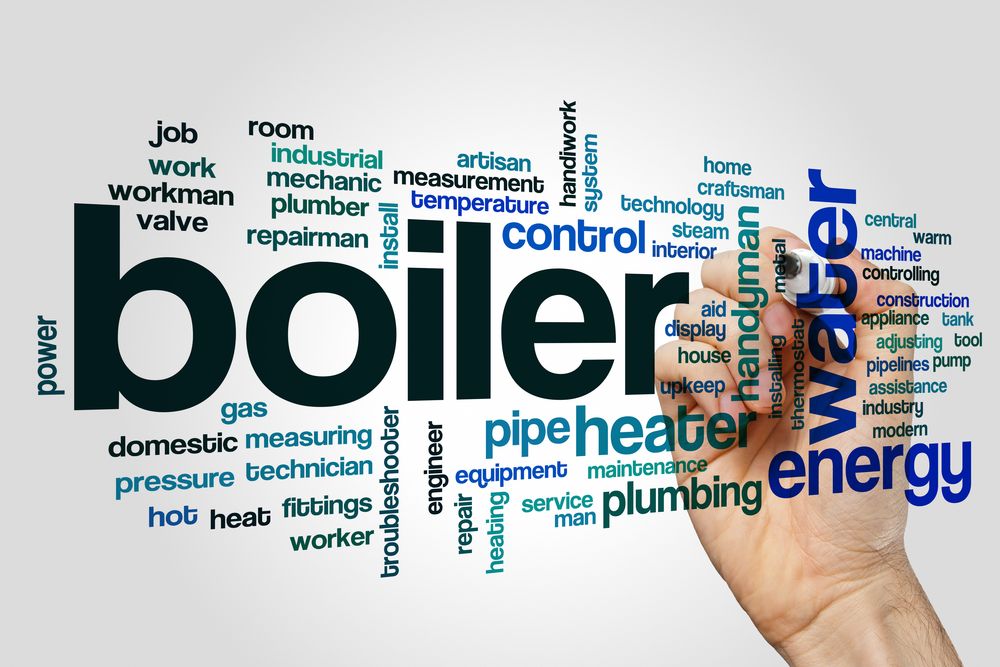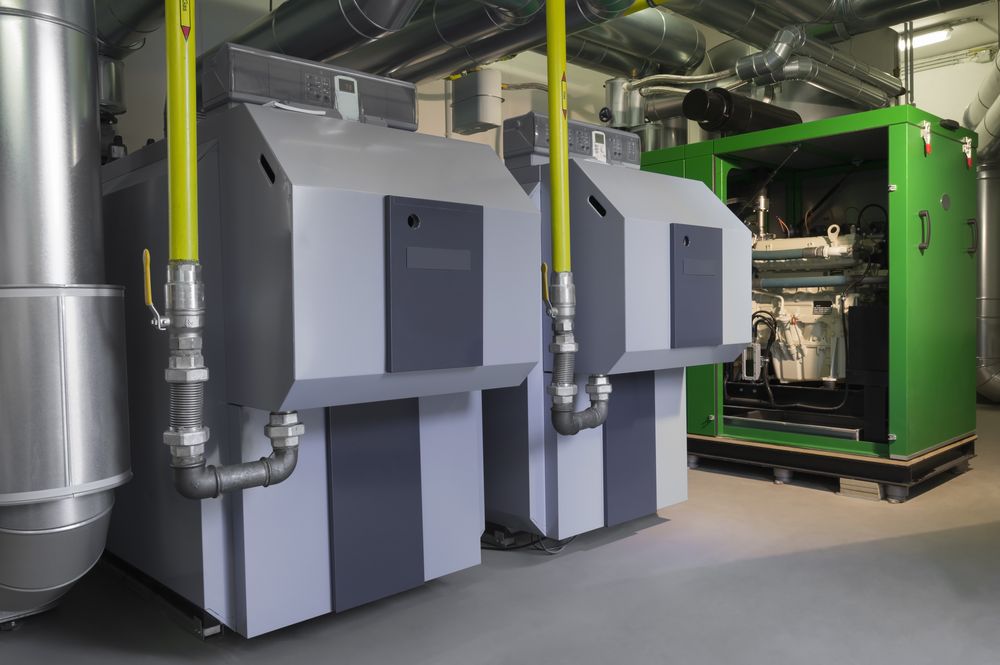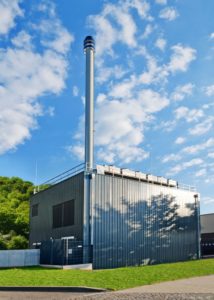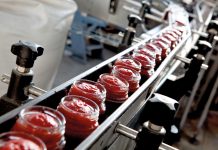Cogeneration and trigeneration plants are real for many food businesses. They offer considerable advantages, from the economic, environmental and energetic point of view, allowing to generate energy at attractive prices, increasing the energy efficiency of the plant, reducing consumptions and recovering the heat which would otherwise be dissipated. All this with significant cuts to CO2 emissions in the atmosphere, in line with recent legislations. Many food businesses are using cogeneration and trigeneration plants. There are several reasons for it, especially environmental and economic, but also regulatory. Thermoelectric power plants and traditional boilers generate polluting emissions, such as oxides of nitrogen and sulphur, carbon dioxide, hydrocarbons, as well as particulate pollutants, which significantly contribute to the greenhouse effect. In the normative field, the Decree 102 dd. 4 July 2014, obliges companies to implement reductions in energy consumptions, indicating even the penalties in case of non-compliance. In particular, reductions in the use of fossil fuel can be achieved by using renewable energy sources, increasing the efficiency of power generation systems, as for example cogeneration and trigeneration systems, which are supported also by the European Parliament as technologies complying with the targets of the Kyoto protocol.
Cogeneration
Cogeneration is the combined production of electrical energy and heat. In particular, cogeneration, also known as Combined Heat and Power generation or simply CHP, is a method that involves the production of two types of energy at a single power plant. In fact, it is possible to produce both types of energy at a single plant using one primary energy source, which can be natural gas, biodiesel or biomasses. The benefits arising from cogeneration can be maximised if the systems are based on the heat demand over several working shifts and/or at least 3500 hours of heat per year for heating and cooling consumption and high electrical loads at the same time. Therefore cogeneration is an excellent solution for food businesses that use large quantities of electricpower and heat, on more working shifts. Cogeneration achieves environmental, economic and energy benefits. By comparing the efficiency of a cogeneration plant with the generation of energy in thermoelectric power stations and of heat in boilers, it results that cogeneration consumes 30-40% less fuel. Sometimes there is even a decrease in greenhouse emissions, and in particular of CO2 , due to reduced fuel consumption. The company is even less dependent on fossil sources. The use of renewable sources is also linked to incentives and low-tax regimes, as natural gas detaxation. High-performance cogeneration plants, with a capacity of more than 200 kW, can sell electricity to the grid. Furthermore, they can benefit from Energy Efficiency Certificates, better known as White Certificates. Cogeneration optimizes the use of generated power, as the heat is not wasted into the environment, as it occurs with traditional plants, but is recovered and reused. Usually, in a thermoelectric plant, only 35% of the fuel is transformed into electric power. This means that at least 65% is released into the environment in form of heat (thermal energy). Powerful plants (motors) achieve higher performances, which however never exceed 55%. When a plant produces power in cogeneration, it can reach even 85% performance. Cogeneration plants, in fact, prevent that this significant amount of energy is wasted, with relevant economic savings, due to the production of energy at lower costs and to the possibility of benefiting of these incentives. Cogeneration plants are thermoelectric plants, where hot water or process steam generated by a prime mover, powered with fossil (natural gas, oil) or organic non-fossil fuel (biomasses, biogas, synthesis gas), are recovered for the production of thermal energy, frequently used in food industries. The engine is connected to an electric generator that produces electrical energy. The heat generated in cylinders, lubrication oil and exhaust emissions, usually would be released in the environment. In a cogeneration plant, instead, it is recovered and transformed into thermal energy by the heat exchangers. Cogeneration in general is suitable even where there is a lack of space, because one plant carries out the work of two.
Cogeneration technologies
The different technologies of a cogeneration plant are based on prime movers. The most frequently used engines in cogeneration plants are reciprocating internal combustion engines, gas or steam turbines, and combined gas and steam turbine plants. In reciprocating internal combustion (Diesel or Otto cycle) engines, heat is obtained from exhaust emissions and engine coolant. In gas turbines, fuel is burned in combustion chambers and expanded with compressed air inside the turbine. During the expansion, the air/fuel mixture interacts with the turbine blades, so that the rotor can rotate and generate mechanical energy, which is used to generate electrical power by means of an alternator. The temperature of the exhaust fumes from the gas inside the turbine amounts to approximately 450-550°C. Thanks to heat exchangers, they can be used to produce hot water or steam. The capacity of a cogeneration plant of this type is of approx. 88%. In steam turbines, on the contrary, steam is generated by a generator and expanded inside the turbine at high pressure. In this case, steam makes the rotor turn to generate mechanical energy, which is then transformed into electrical energy by an alternator. This cycle can be combined with a gas turbine, creating a combined cycle as mentioned before. In this case, the heat recovered from the exhaust fumes of the gas turbine are used by a heat exchanger to generate the steam needed to feed the steam turbine. Steam turbines and combined cycles are high-performing plants, and for this reason they are used in industrial plants. However, next to traditional technologies there are also several innovative technologies such as Organic Rankine Cycle turbogenerators, micro-turbines, plants with Stirling engines and fuel cells. ORC turbogenerators are turbines similar to steam turbines, that instead of steam use heating oil vaporised using the heat of a hot source (such as boilers or solar captors). The fluid that leaves the turbine, releases its heat for various industrial processes; and when it is cooled, it returns to the evaporator, closing the thermodynamic cycle. These plants are used in medium-small factories, and can be fed with biomass. They are characterised by high electrical (18%) and thermal efficiency (80%), low maintenance and long life. Yet, they are quite bulky and perform from 200 kW upwards, so they are not suitable for micro-cogeneration. Micro-turbines are ideal for mini- and macro-cogeneration, because their range goes from 1 kW to tens if not hundreds of kW. They use natural gas, propane, kerosene, diesel oil and biogas. They achieve 25-35% electrical efficiency and, compared to internal combustion engines, they are silent, less polluting, have less moving parts – hence less wear parts – but they are more expensive. The gas, released at temperatures above 250°C, is recovered to generate steam or hot water. Fuel cells generate electrical power by means of an electro-chemical reaction starting from the hydrogen and oxygen present in the atmosphere. Fuel cells are very silent, have zero emissions, and are compact: this property makes them ideal for mini- and micro-cogeneration. The capacity of a fuel cell is comprised between 40 and 60%. A Stirling engine is a combustion engine, in which heat is supplied from an external exchanger. The overall performance, comprising the thermal and electrical performance, is very high and can reach even 90%. These engines are very silent and require little maintenance. However, they are still very expensive and bulky. Stirling engines can be combined with gasification processes, allowing the use of biomasses as fuel, for the production of gas to be used in the combustion chamber. In this case, CO2 emissions cancel each other, making the process even more environmental-friendly.
Photovoltaic cogeneration is a special type of cogeneration – more green-oriented. In this case, part of the solar energy that is not used by photovoltaic processes is recovered in form of thermal or light energy. Hot water can be used for the generation of sanitary hot water, or for low-temperature heating plants, just like a conventional thermal solar plant. Even in this case, the total plant performance increases, since the capacity of a photovoltaic solar water heating system adds the 15% it normally achieves with photovoltaic generation to approximately 58% performance due to the recovery and use of heat that otherwise would be wasted. Photovoltaic performances are generally improved, since the photovoltaic-thermal system cools the photovoltaic module thus increasing its electrical production up to 12% more. Furthermore, the maximum temperature in the captor is below 90°C, thus avoiding the problem of stagnation and summer boiling, typical of a traditional solar heat system. Thanks to the high performance, returns on investment can be obtained in 3-4 years only.
Trigeneration
Trigeneration (CCHP Combined Cooling, Heating and Power) the natural evolution of an integrated cogeneration system, the simultaneous production of electrical energy, heat and cold using a single source of primary energy (fuel) on a single plant. A trigenerator consists in a cogeneration plant combined with an absorption chiller for the production of chilled water for industrial uses. The absorption chilling units are designed to use hot warm or hot water as primary energy source. They have zero-impact on the environment as they do not release any polluting gas. By combining them with a cogenerator it is possible to use the heat that would otherwise be dispersed into the environment. The absorption chiller can produce cooled water at the temperature of approx. 7°C, in line with the needs of most refrigeration systems. The cooled water can be used for ambient, civil and industrial air conditioning in summer and by an alternator for production of renewable electrical energy.






